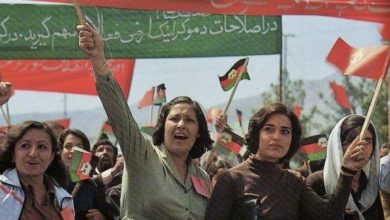Recent news reports indicate that the resistance against the U.S. and NATO occupation of Afghanistan has been strengthening rapidly, fueled by outrage over mounting civilian deaths and widespread distrust of the invading armies. The new Democratic administration is shifting gears and focusing increasing military and political effort to avoid a humiliating defeat for the U.S. ruling class. This shift starkly exposes the U.S. imperialist designs on the country.
 |
The initial signal of this strategy shift was the announcement that 17,000 more troops would be sent to augment the occupation forces.
President Obama and Vice President Joseph Biden’s comments are the latest indication of the shifting strategy. In a March 6 interview with the New York Times, Obama acknowledged the United States is not winning the war in Afghanistan. He suggested the United States is reaching out to insurgent groups as has been done in Iraq, saying, “There may be some comparable opportunities in Afghanistan and in the Pakistani region”
On March 10, Biden expanded on that strategy, following talks with NATO officials in Brussels: “I do think it’s worth engaging and determining whether or not there are those who are willing to participate in a secure and stable Afghan state.” He painted a picture of an insurgency that could be manipulated with offers of cash, claiming that 70 percent of the insurgents were only interested in getting paid, 5 percent would never be won over and the rest had questionable loyalties.
Administration officials are suggesting that paying insurgents can entice them to “peel away” from the resistance and switch their loyalties to a central government friendly to U.S. geostrategic interests.
A high-ranking group of U.S. military officials and diplomats, including Gen. David Petraeus, head of U.S. troops in the region, and special envoy Richard Holbrooke, have been instrumental in a strategic review of the situation in Afghanistan and Pakistan.
The U.S. occupation of Afghanistan is part of a larger campaign to dominate the region’s resources, land and markets. The volatile region is increasingly being referred to as Af-Pak, reflecting the widening popular rejection of U.S. intervention that is not isolated to a single country.
Civilian deaths from U.S. Predator drone attacks in Pakistan are further inflaming the situation. A March 17 New York Times article noted that the administration is considering expanding the area in which the drone attacks are being carried out to cover a larger region of Pakistan.
A March 13 International Crisis Group report called the U.S. strategy into question. “Afghanistan is awash with weapons and armed groups,” the report noted. “Creating unaccountable local militias—based on a false analogy with Iraq—will only worsen ethnic tensions and violence.”
In spite of those warnings, Washington is looking to also forge alliances with parts of the Taliban, a politically reactionary formation whose leaders fought in the CIA-backed war against the socialist government that was in power in Afghanistan between 1978 and 1992.
The United States provided limited financial support for the Taliban until the Sept. 11, 2001, attack, at which point Washington immediately demanded that the Taliban hand over Osama Bin Laden. The Taliban did not rule that out, but asked the U.S. government for proof of Bin Laden’s involvement in the assault. The Bush administration declared there would be “no negotiations,” launching a massive bombing campaign and invasion in October 2001.
The U.S. occupation of Afghanistan is now in its seventh year. The shifting U.S. strategy towards increased militarization and political maneuvering reveals the intentions of the ruling class to continue the occupation indefinitely.
The Afghan people have fiercely resisted colonial occupation. The hope for peace and stability in Afghanistan and the region lies in the self-determination of the Afghani people—not imperialist occupation.





